Wouldn’t it be ideal for every employee to know exactly what to do, when, and how? Workflow documentation is the blueprint for this ideal.
A dedicated document workflow acts as a single source of truth, explaining employees every step of your business processes so there is no room for confusion or errors.
It provides clarity on the stakeholders involved, steps to be undertaken, approval checkpoints, and the ultimate objective of a process.
In this blog, we’ll explore the importance of workflow documentation, its benefits to your organization, and practical steps on how to create workflow documentation effectively.
What Is Workflow Documentation?
Process workflow documentation indicates the entire lifecycle of your business processes. From capturing information to editing, approving, storing, and sharing it with stakeholders, the workflow documentation covers every stage of your business process.
It typically includes step-by-step instructions, flowcharts, timelines, and any relevant tools or resources needed to complete the process. The goal is to standardize workflows across teams and departments, reducing variability and improving overall efficiency.
With well-written workflow documentation, there is more transparency and fewer human errors, ensuring efficient business operations.
For example, the workflow documentation for a company’s onboarding process for new employees would outline each step, from initial job offer acceptance to the employee’s first day on the job.
It would include tasks like setting up IT accounts, scheduling orientation sessions, and assigning a mentor. By documenting this workflow, the HR team ensures that all new hires receive a consistent onboarding experience, reducing the likelihood of missed steps or delays.
Why Document Your Workflows?
The need to document workflows usually arises from specific challenges or pain points within a business, leading to employee inefficiencies, errors, and frustration.
Let’s look at the five most important challenges businesses aim to tackle with workflow documentation.
- Operational Confusion: Teams may struggle with unclear roles and responsibilities, leading to misunderstandings and mistakes that could be avoided with clear documentation.
- Inconsistent Output: The lack of standardized processes results in the quality of work varying between teams or individuals, resulting in unreliable outcomes and potential customer dissatisfaction.
- High Turnover Impact: Frequent employee turnover can cause knowledge gaps, where critical process knowledge leaves with departing employees, making it difficult for new hires to perform effectively.
- Compliance Risks: In highly regulated industries, failing to adhere to specific procedures can lead to legal penalties, fines, or audits, making it essential to have documented workflows as proof of compliance.
- Inefficiency & Waste: Lack of documentation often results in duplicated efforts or missed steps, leading to wasted time and resources, which hampers overall business productivity.
What Are the Benefits of Effective Workflow Documentation?
Document workflow management can bring numerous benefits to your business. Let’s look at some of the major advantages:
1. Workflow Aids Collaboration
Workflow documentation management ensures process information is quickly accessible to everyone across teams.
With easy and instant access to critical company documents, employees can work in collaboration and stay on the same page. They can address challenges together and keep close track of every change made in your company’s documentation.
2. Helps Boost Security
Well-written, comprehensive workflow documentation helps enhance security by clearly outlining processes, roles, and responsibilities, reducing the risk of unauthorized access or errors.
By defining secure procedures and ensuring that all team members follow consistent guidelines, companies can better protect sensitive information and maintain compliance with security standards.
3. Improves Operational Efficiency
Effective workflow documentation helps streamline operations by providing clear instructions and standardized procedures for all tasks. This reduces ambiguity, minimizes errors, and ensures that everyone follows best practices, leading to faster execution, reduced downtime, and overall increased productivity within the organization.
4. Enhances Accountability
Documenting workflows clearly defines roles and responsibilities within a process, making it easier to track who is responsible for each task.
This transparency fosters accountability, ensuring that team members understand their obligations and deadlines, which can lead to better performance and more reliable outcomes.
5. Supports Continuous Improvement
With documented workflows, businesses can regularly review and analyze their processes to identify areas for improvement.
This documentation provides a baseline for making data-driven decisions, enabling teams to refine and optimize workflows over time, increasing efficiency and effectiveness.
What Are the Steps to Writing an Effective Workflow?
To document workflows for your business processes, you need to perform a series of steps that ensure clarity, consistency, and efficiency. Here’s a step-by-step guide to creating a well-structured workflow:
Plan
Setting goals without proper planning is like going on a road journey without a map. It’s directionless and aimless.
Planning is a crucial component of workflow process documentation, as it gives you and your team a proper path to follow. At this stage, you consult with key stakeholders about the content that should go into your documentation.
In the planning phase, you should capture as much information as possible from all stakeholders so it can be structured and used optimally in the next steps.
Content Creation & Structure
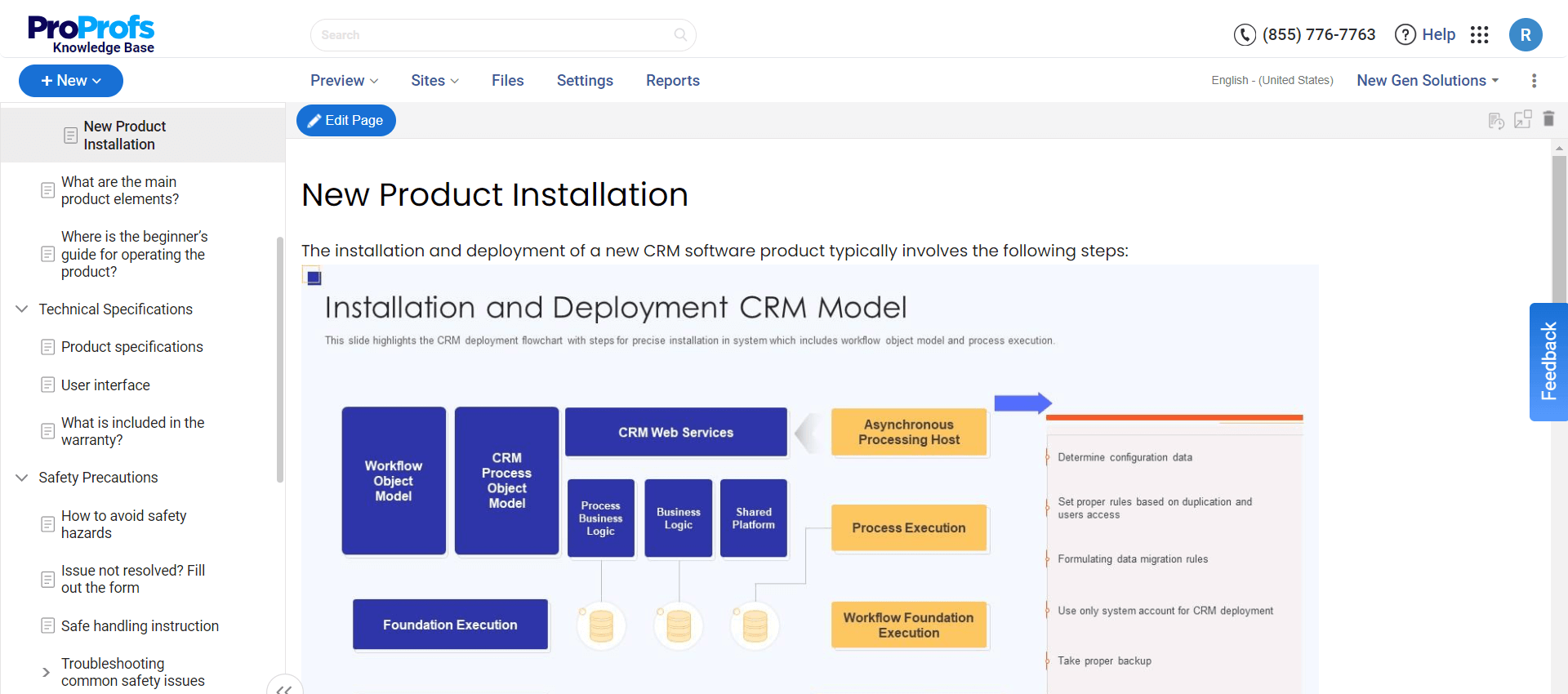
Once you have collected all the necessary information, put it together on a cloud-based platform. This is the place where employees can directly contribute to the document, import existing files, and give a proper structure to the content.
Process documentation tools like ProProfs Knowledge Base help you unite employees by assigning them specific roles and permissions. With clearly defined roles, employees can collaborate and build content for your workflow process documentation.
While creating content, ensure that it is structured correctly to help readers navigate through the topics effortlessly. The document should start with a home page that gives a glimpse into the inside content. There should be a table of contents with broad topics and their sub-categories defined clearly.
Next, you can even interlink articles and add a “Related Articles” section at the bottom of every page. This will give your documentation a proper structure and ensure a delightful learning experience for your employees.
Content Review & Approval
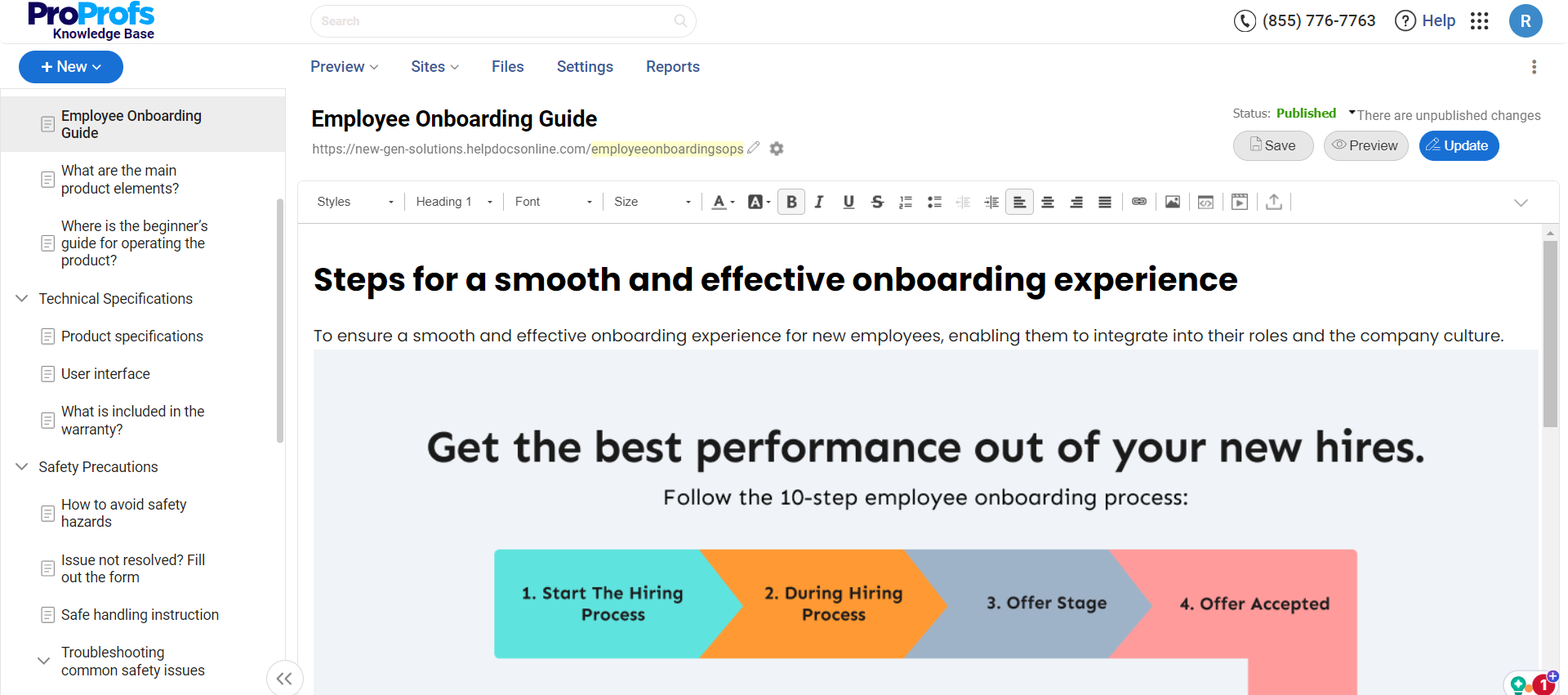
Every article that goes into your review workflow should pass through multiple review cycles, during which editors and subject matter experts vet the content for factual, structural, and grammatical errors.
When experts regularly review the content, the quality and accuracy of process-related information are bound to be up to par. Employees will always have access to reliable information that can be trusted and used without second thoughts.
You can set up a workflow review and approval process using online documentation software. Depending on its stage, you can give every article a unique status, such as – Draft, In Progress, Ready for Review, or Published. This boosts transparency and helps you keep a close track of the journey of each article, right from the time it’s written till it finally gets approved and published.
Capture Feedback
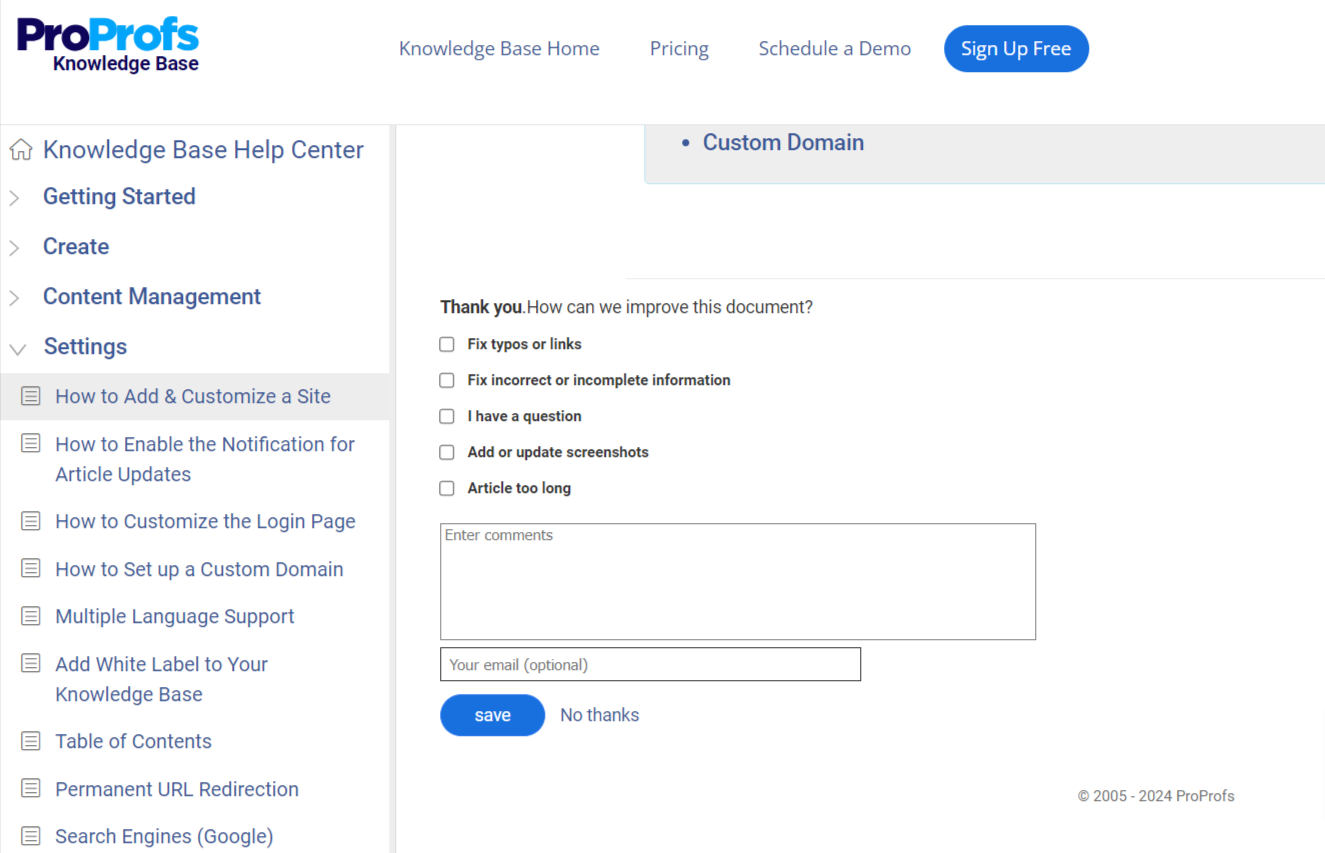
The best way to test your process workflows is to collect employee feedback regularly. Their suggestions will introduce you to a whole new dimension, allowing you to adjust your workflows accordingly.
Additionally, employee feedback will spotlight the problems in your current process workflows. With such crucial knowledge at your disposal, you will be better positioned to fine-tune the workflows and make the necessary changes to your documentation.
You can add feedback forms and surveys to help employees give suggestions immediately. For example, after every article, add a feedback form with the question – Did you find this information helpful? Provide Yes/No as the answer options and let employees give detailed feedback in the comment box.
Analyze, Improve, & Revise
The process of documenting and publishing workflows has more to it than what meets the eye. Once your documentation is out there helping employees understand process workflows, you have to do everything possible to maintain the relevance and accuracy of the information provided.
As time passes, your business processes and workflows are bound to evolve. This should be reflected in your documentation, too. Every few days or months, run a quality check to see if things are moving in the right direction and if the information provided is serving its purpose.
By deploying the best software documentation tool, you can easily monitor your document’s performance and gauge its effectiveness. Such tools come with built-in reports that provide a sneak peek into several metrics, such as:
- Failed and successful searches
- Best and poor-performing articles
- Broken links, and much more.
FREE. All Features. FOREVER!
Try our Forever FREE account with all premium features!
Workflow Documentation Examples & Templates
Effective process documentation provides a clear and structured approach to complex tasks and procedures. Below are a few examples of how process documentation can be effectively implemented in different scenarios.
Customer Service Troubleshooting Guide Example by ProProfs Knowledge Base
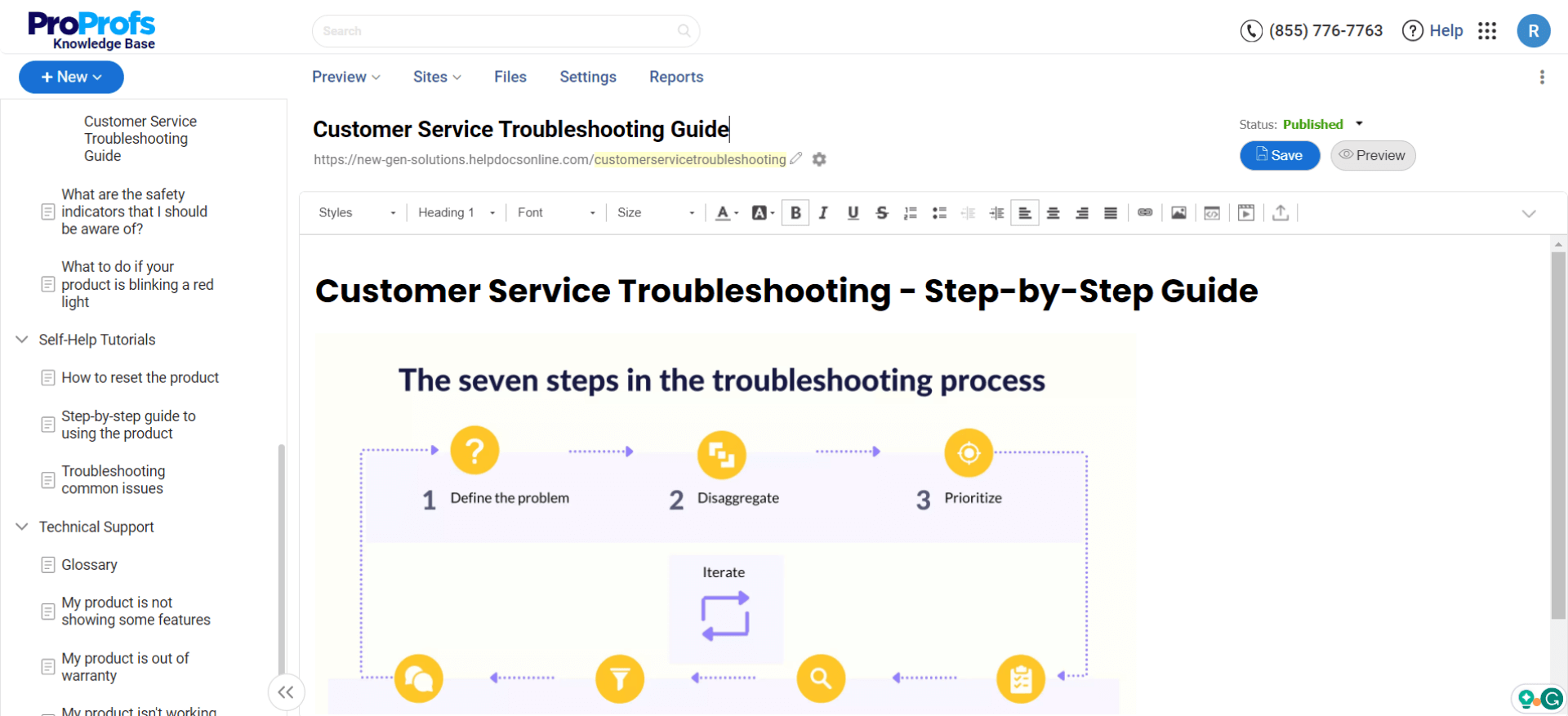
The customer service troubleshooting guide helps customer support teams systematically identify, analyze, and resolve customer issues. By following a structured approach, it ensures that problems are addressed promptly and accurately, reducing frustration for both customers and support staff.
ProProfs Knowledge Base helps users create error-free workflow documentation quickly with its pre-approved documentation templates complemented by an AI-powered text editor. The editor is a Word-like WYSIWYG editor, which comes with built-in generative AI prompts and suggestions.
You can also collaborate in real time with features like internal comments for collaborative editing, role-based workflows for outlining member responsibilities, and conditional content for secure information sharing.
CDS Convert
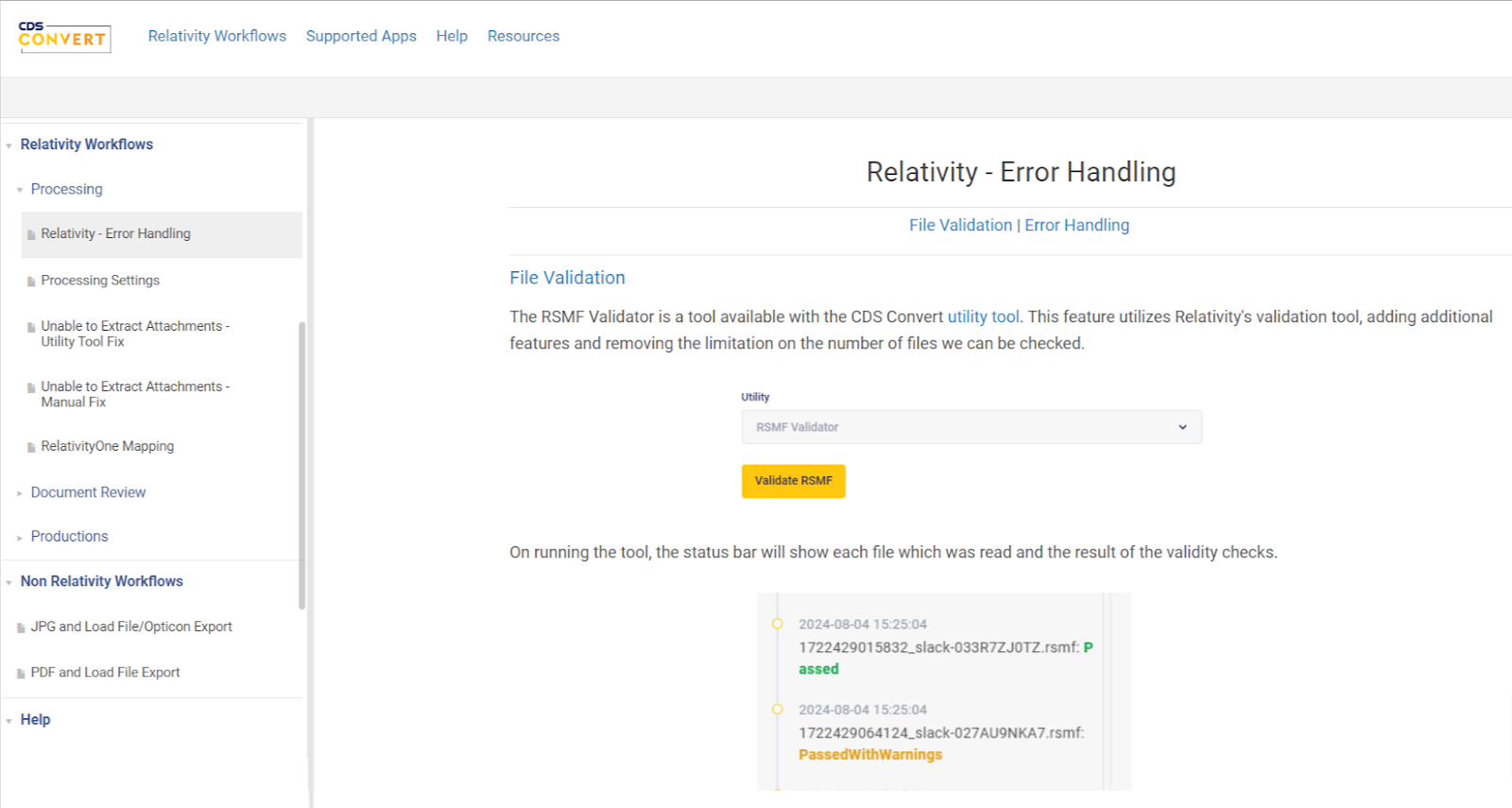
The help page adopts a straightforward and informative writing approach, providing clear explanations and solutions for common issues users may encounter using the CDS Convert tool. The page is well-structured, with a logical flow and clear headings, making it easy for users to navigate and find relevant information.
The page covers a range of status messages as a result of validity checks like Passed, PassedWithWarnings, and Failed with their respective criteria. The information is well complemented with screenshots to make the help page easy to understand.
Workflow Process Documentation Template by ProProfs Knowledge Base
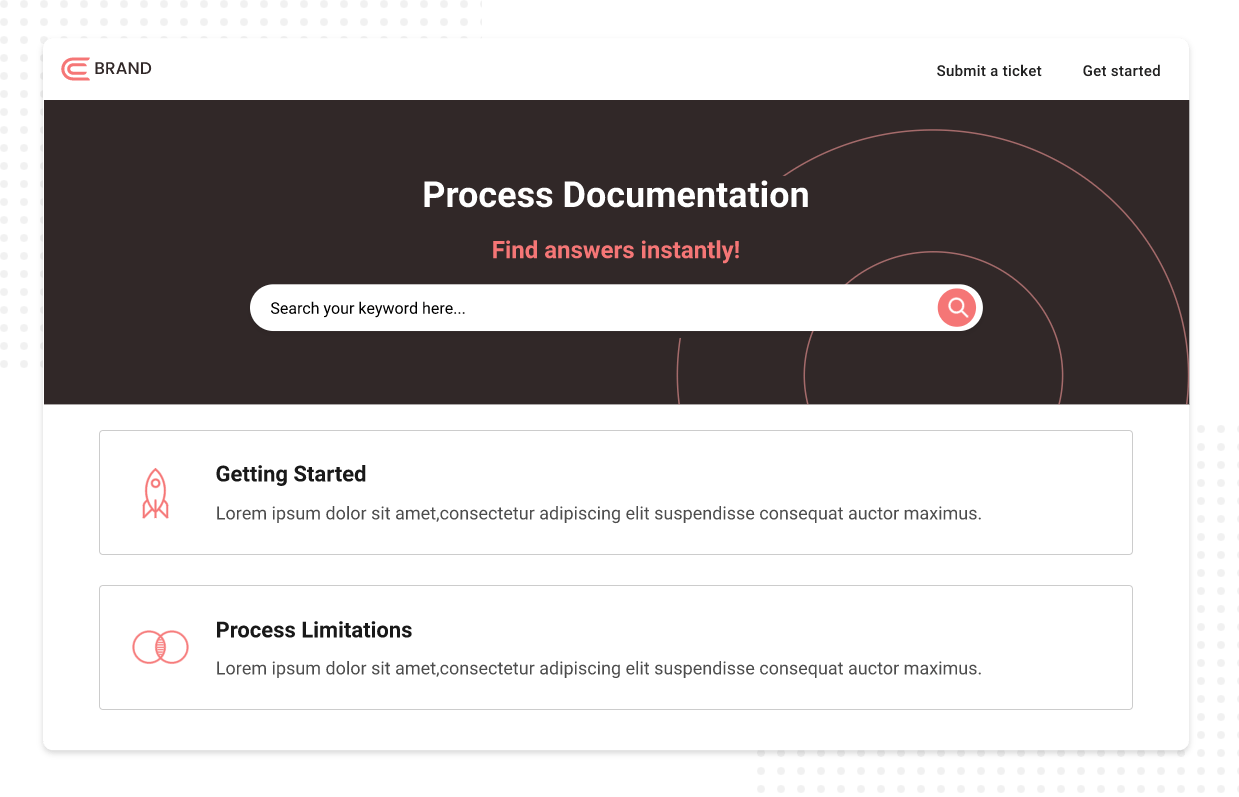
ProProfs Knowledge Base enables a ready-to-use process documentation template that is easy to use and fully customizable. This template helps you start and end the document creation process efficiently.
It helps by providing a structured format for capturing and standardizing workflows, ensuring consistency and clarity across tasks. It simplifies the documenting procedures process, making it easier for teams to follow, train new employees, and maintain operational efficiency.
Boost Collaboration & Efficiency with Workflow Documentation
Building a workflow process document is pretty simple and straightforward if you know the right steps. Start by creating a strong plan that guides you every step of the way. Once you have a plan ready, start creating content for your documentation. This can be done collaboratively by teams. Employees across departments can work collectively and bring their unique insights to the table.
ProProfs Knowledge Base can offer all the help you need for the successful execution of this process. It is well-equipped with powerful features for writing, designing, and publishing documentation that reads well and looks great. Explore it more below.
 Tips
Tips
We’d love to hear your tips & suggestions on this article!
FREE. All Features. FOREVER!
Try our Forever FREE account with all premium features!


 We'd love your feedback!
We'd love your feedback! Thanks for your feedback!
Thanks for your feedback!







